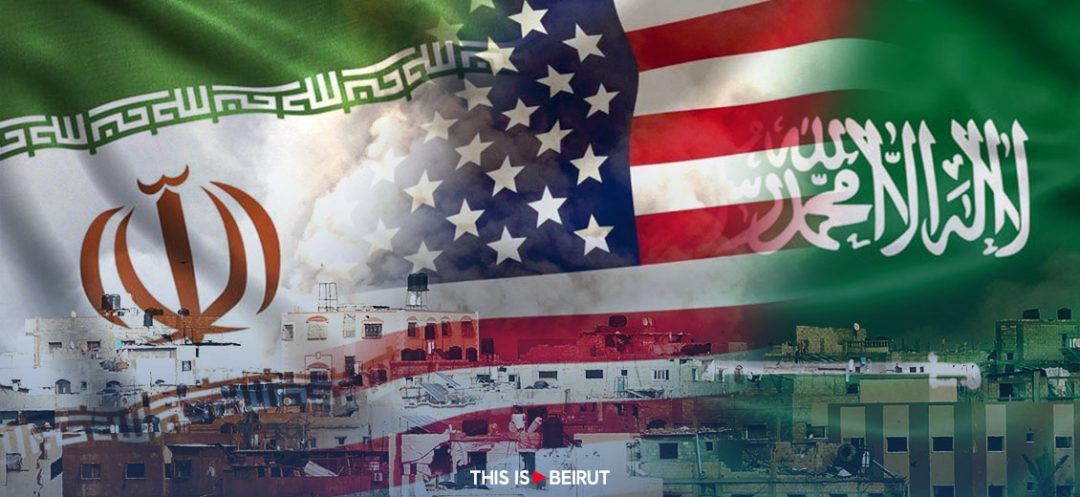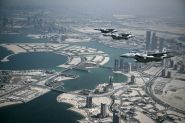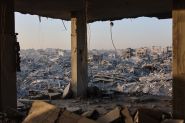- Home
- Middle East
- The American Peace Proposal and the Intricacies of an Ongoing War

US President Joe Biden has seized on the ongoing war to offer a peace deal that dovetails with a finalized regional strategic understanding between the United States and Saudi Arabia. The settlement of the current conflict should be part of a new strategic vision that aims at extracting the Middle East from the Iranian stranglehold, rehabilitating the region’s ability to outmaneuver its power strategies and integrating the Israeli-Palestinian deal into the larger normalization dynamics projected by the ongoing negotiations between the US and Saudi Arabia. The singularity of the offer is due to its emphasis on the termination of the current hostilities as part of an overall strategic vision that aims at a systemic overhaul based on reordered priorities and scheduling.
The suggested dynamic is enticing but still hobbled by sundry impediments which range between party rejections, conflicting strategic agendas featured by the New Cold War players and their surrogates, the inherent ideological obstructionism on every side, the well-entrenched fears and hostilities of the conflicting parties and their legacy of institutionalized violence and fossilized animosities and inured traits of malevolence and helplessness. This is aside from the fact that the US-Saudi strategic plan is still controversial, marred with uncertainties regarding the nuclear deal between the US and Saudi Arabia, its management and monitoring, its political conditionalities and enforcement and the nature of the relationships between Saudi Arabia and China. While hammering out the various clauses of the deal, the seething conflicts are continuing their unabated course, which directly challenges the likelihood of its implementation.
The ideal projections of the US peace plan are hitting a snag on every step, at least at a time when conflicts are unabashedly pursuing their course and the warring factions are not inclined to compromise. The US-Saudi duo has to proceed into de-mining the terrain while reviewing the final drafts. The Iranians and their surrogates are pursuing their sabotaging all along, the Palestinians are unable to overcome their dependencies and build a united stand at this critical stage of open warfare and bloodletting, and the Israelis, notwithstanding their serious political differences, are still determined to upend the strategic equation which exposed their security over the last two decades.
One wonders whether Israelis and Palestinians are ready and able to reengage the cumulative legacy of peace agreements, neutralize and set aside the deleterious consequences of inter-Islamic civil wars and renewed Cold War politics. Otherwise, the strategic trade-offs (building Saudi nuclear infrastructures, forging security agreements similar to Japan’s post-WWII arrangements, overcoming the differences within the Democratic Party over the normalization with Saudi Arabia under MBS…) may not lead to anything. The stage of confidence-building measures is trailblazing if the new peace dynamic is to be set in place.
This new initiative is a sequel to the peace dynamics that were disrupted on October 7, 2023 and behooves the reconstruction of a new strategic matrix and a new political momentum, which seem to be lacking at this juncture. The new strategy cannot automatically move beyond the obstacles erected by the emerging Cold War coalition, reckon with Iranian strategic interests and de facto colonization of Iraq, Syria and Lebanon and the sway over the Palestinian political landscape and overlook the deepening mutual distrust and the polarization of the extremes on both sides.
The novelty and boldness of the proposal lie in its comprehensive nature and its determination to break the cycles of violence at their source: the demise of peace predicates based on moral reciprocity, mutual acknowledgment and respective rights to national self-determination, the recantation of cultivated dependencies and the immobilizing effects of power politics and their cortege of proxy conflicts. One wonders whether this kind of blueprint is likely to translate into effective policy-making short of a new strategic equation: checkmating Iran, defeating Hamas and Hezbollah and putting an end to the ravings of the Israeli ultranationalist and religious right. All these questions should be raised and addressed while working out the details of the grand peace scenario.
The intellectual and moral framing of the new deal is not enough, unless the strategic coordinates are well-defined. It would be a wonder if the conflicting parties agree on the analytics of the peace proposal and its practical procedures (instrumentum laboris). Based on previous experiences and the deliberate spiking of earlier peace accords, one has to be very skeptical and wary about the moral dispositions of the various actors and the situational constraints imposed by decaying regional geopolitics, the strengthening of Islamic radicalism and neo-imperialism, renewed authoritarianism and the imponderables of cascading state failures in an area that lost its strategic moorings and normative compasses. Still, the US-Saudi endeavor is earnestly mandated and should forge its way into implementation.
Read more



Comments